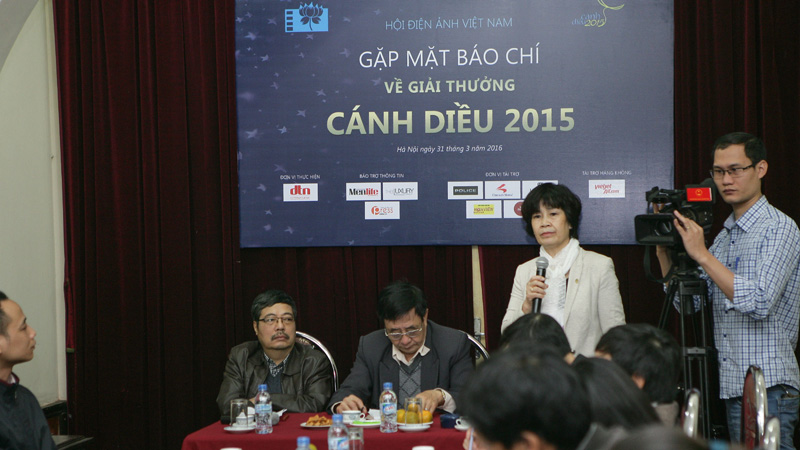
The 2017 Golden Kite Awards’ organisation board received 117 cinematographic submissions in various categories, including featured film, TV series, documentary film, cartoon, scientific films and short films, as well as four film studies and critiques.

At the press
conference in Hanoi
on April 5
The information was announced by Nguyen Thi Hong Ngat, Vice
Chairwoman of the Vietnam Cinema Association at the event’s press conference on
April 5.
She said that Vietnamese remakes of
foreign films and scripts will not be considered for the Kite Awards – the most
prestigious cinematographic awards in the country. According to Vice Chairwoman
of the Vietnam Cinema Association Hong Ngat, the current number of remakes is
enormous, and the awards will not accept nominations for this category.
However, the awards will honour individuals involved in making those works, she
added.
In addition, the 2017 edition of the
annual awards will include two more prize categories, which are cameramen of
scientific documentaries, and animators.
The award ceremony of the 2017 Golden
Kite Awards will be held at the Hanoi Opera House on April 20 and will be
broadcast live on the Vietnam Television VTV2 channel.
The nominated films will be screened
free for the public at the August Cinema, the National Cinema Centre, and the
Studio for Documentary & Scientific Film in Hanoi from April 9 to 13, with invitations
given away at these locations starting on April 6.
On the occasion, the Kite Awards organising
board will also run a conference to review the creation of films and series
last year at the headquarters of the Vietnam Cinema Association (No 51 Tran
Hung Dao Street) on April 9.
Source: NDO
With an increasingly vibrant and widespread emulation movement aimed at building cultured residential areas and cultured families, Yen Thuy District has been making steady progress toward improving both the material and spiritual well-being of its people, while fostering a civilized, prosperous, beautiful, and progressive community.
Once lacking recreational spaces and community facilities, Residential Group 2 in Quynh Lam Ward (Hoa Binh City) has recently received attention for the construction of a new, spacious, and fully equipped cultural house. The project followed the model of state support combined with public contributions in both labor and funding.
The "All people unite to build cultural life" movement, which has been effectively integrated with Kim Boi district’s socio-economic development goals, is fostering a lively spirit of emulation across local residential areas, hamlets, villages, public agencies, and enterprises. In addition, through the initiative, traditional cultural values are being preserved and promoted, while community solidarity and mutual support in poverty reduction and economic development are being strengthened.
A working delegation of the Hoa Binh provincial People’s Committee led by its Permanent Vice Chairman Nguyen Van Toan on June 11 inspected the progress of a project to build the Mo Muong Cultural Heritage Conservation Space linked to tourism services in Hop Phong commune, Cao Phong district.
Born and growing in the heroic land of Muong Dong, Dinh Thi Kieu Dung, a resident in Bo town of Kim Boi district, in her childhood was nurtured by the sweet lullabies of her grandmother and mother. These melodies deeply imprinted on her soul, becoming an inseparable part of her love for her ethnic group's culture. For over 20 years, this love for her hometown has driven Dung to research, collect, and pass down the cultural values of the Muong people to future generations.
In the final days of May, the Ethnic Art Troupe of Hoa Binh Province organized performances to serve the people in remote, mountainous, and particularly disadvantaged areas within the province. These were not just ordinary artistic shows, but they were the meaningful journeys aimed at spreading cultural values, enhancing the spiritual life of the people and contributing to the preservation of ethnic minority cultural identities.



